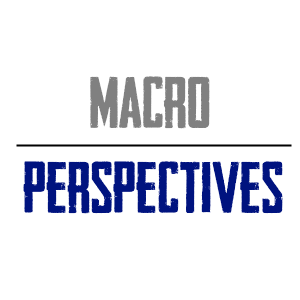Did QE work? That remains one of the most common questions in finance and economics. My answer is simple – it depends! I know, that’s not a super helpful answer, but hang around and let me explain in more detail.
I want to use a simple analogy to analyze how QE works and whether it actually works. I’ve done this in the past, but I think it’s clearer in my mind now so hang in there. So, QE is a basic asset swap. We all know that by now. The Central Bank creates money from nothing and buys bonds from banks. The banks hold the equivalent of cash and forgo the bonds and their income. The Central Bank holds the bonds and doesn’t have cash. Now, even though the Central Bank is holding the bonds it’s really best to think of the bonds as having been temporarily retired. That is, they aren’t in the real economy and the Central Bank isn’t using them to shop for groceries or impact spending in any significant way. So, they’ve printed cash, but they’ve kind of unprinted the bonds.
A stock buyback is kind of similar. When a company buys back stock they are using cash to remove an instrument from the non-corporate private sector. They effectively retire the stock in exchange for cash. Existing shareholders own fewer shares that give them access to the same amount of free cash flow (ie, their shares are worth more). The selling shareholders swapped stock for cash. This is an asset swap in much the same way that QE is.
Okay, so the question then is, when are these asset swaps good ideas? Well, it totally depends. In the case of a stock buyback the company is smart to buyback stock when they think their shares are undervalued and that they believe the after tax effective return to shareholders will be better than other ways of spending the money. Of course, there is a degree of financial engineering here. After all, a buyback does not necessarily make the corporation better off at an operational level. That is, buybacks aren’t nearly the same as inventing something super profitable. So, a company could buyback shares til it’s blue in the face and that stock can still crash to Earth (this is actually happening to lots of retailers in the last few years). But we should not confuse this to mean that buybacks are necessarily bad. That is a myth that has run rampant in recent years and is not necessarily accurate.¹
QE is basically the same. The Central Bank can alter the composition of outstanding financial assets by changing how liquid our balance sheets are, but this doesn’t necessarily change the fundamentals of the underlying economy. So, for instance, I’ve always said that QE was super effective in 2008 and 2009 because it helped liquify balance sheets at a time when they were illiquid. But it had diminishing returns as the environment stabilized and there was less need for this liquidity. And like a stock buyback, there’s no reason why the US economy couldn’t have continued to get much worse despite QE. Liquidity is an important aspect of economic health, but it doesn’t necessarily solve fundamentally problematic issues underneath.
So, while stock buybacks and QE aren’t exactly the same they are similar in the sense that their efficacy is contingent on the specific environment and the implementation. There will be times when this is a good idea and times when there’s just better ways to implement policies that try to move the private sector needle in one direction or another.
¹ – The most common form of this myth is that dividends are good while buybacks are bad. The reality is usually the opposite. Dividends and buybacks are the same in the sense that they are both ways of returning cash to shareholders. Buybacks, however, impose no necessary tax burden on the shareholder and are often a superior option as a result. Dividends, for whatever reason, are seen as good because, well, I don’t really know. I guess the ability to see your cash in hand is better than being told you own more relative free cash flow than you did before.
NB – I am sorry for the title of this post. There was no “other stuff” here. Actually, I change my mind. Here’s some other stuff. Watch these two British chaps jump into a trampoline full of mouse traps. You’ll learn nothing useful from it, but it will distract you from having to read about Donald Trump for the next 10 minutes.
Mr. Roche is the Founder and Chief Investment Officer of Discipline Funds.Discipline Funds is a low fee financial advisory firm with a focus on helping people be more disciplined with their finances.
He is also the author of Pragmatic Capitalism: What Every Investor Needs to Understand About Money and Finance, Understanding the Modern Monetary System and Understanding Modern Portfolio Construction.

